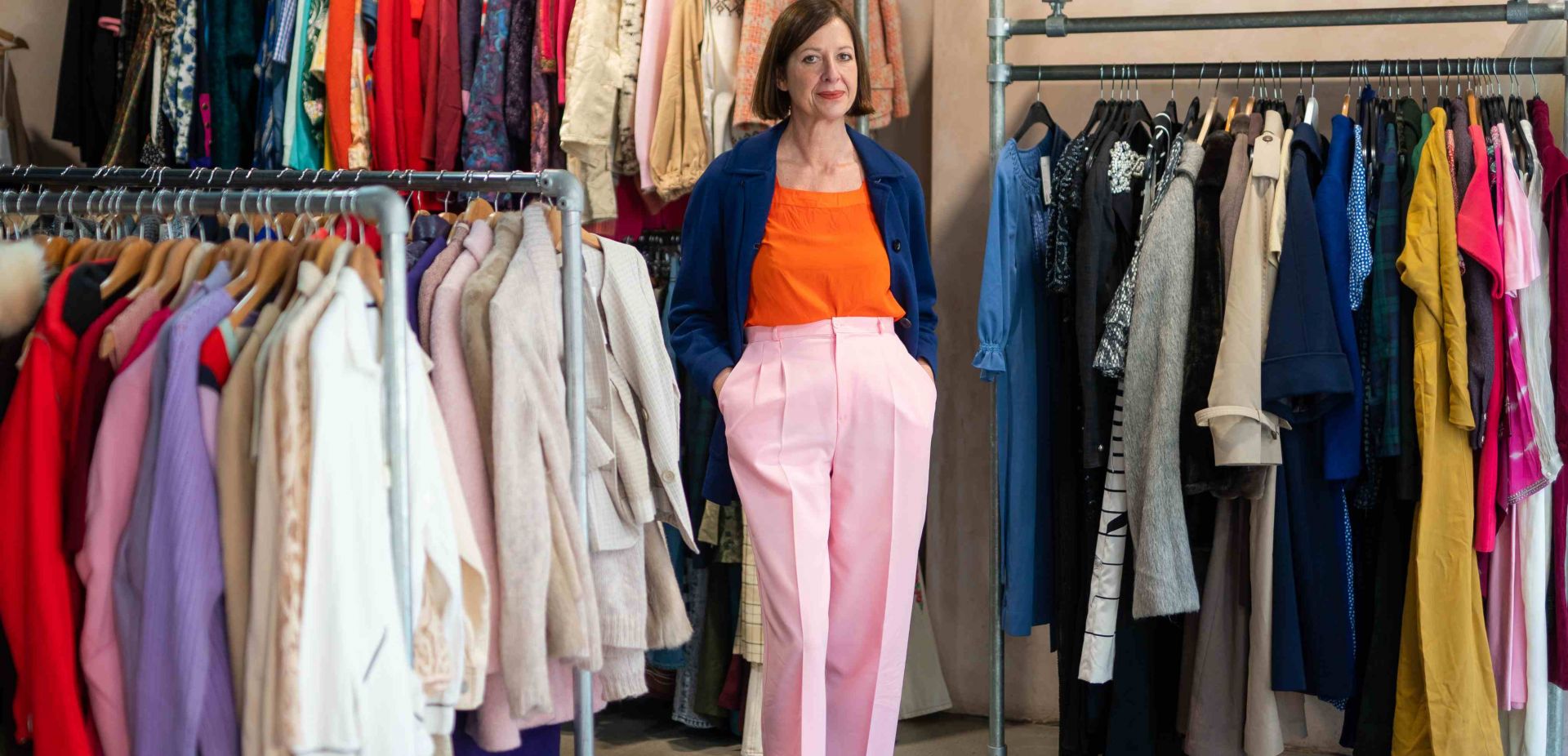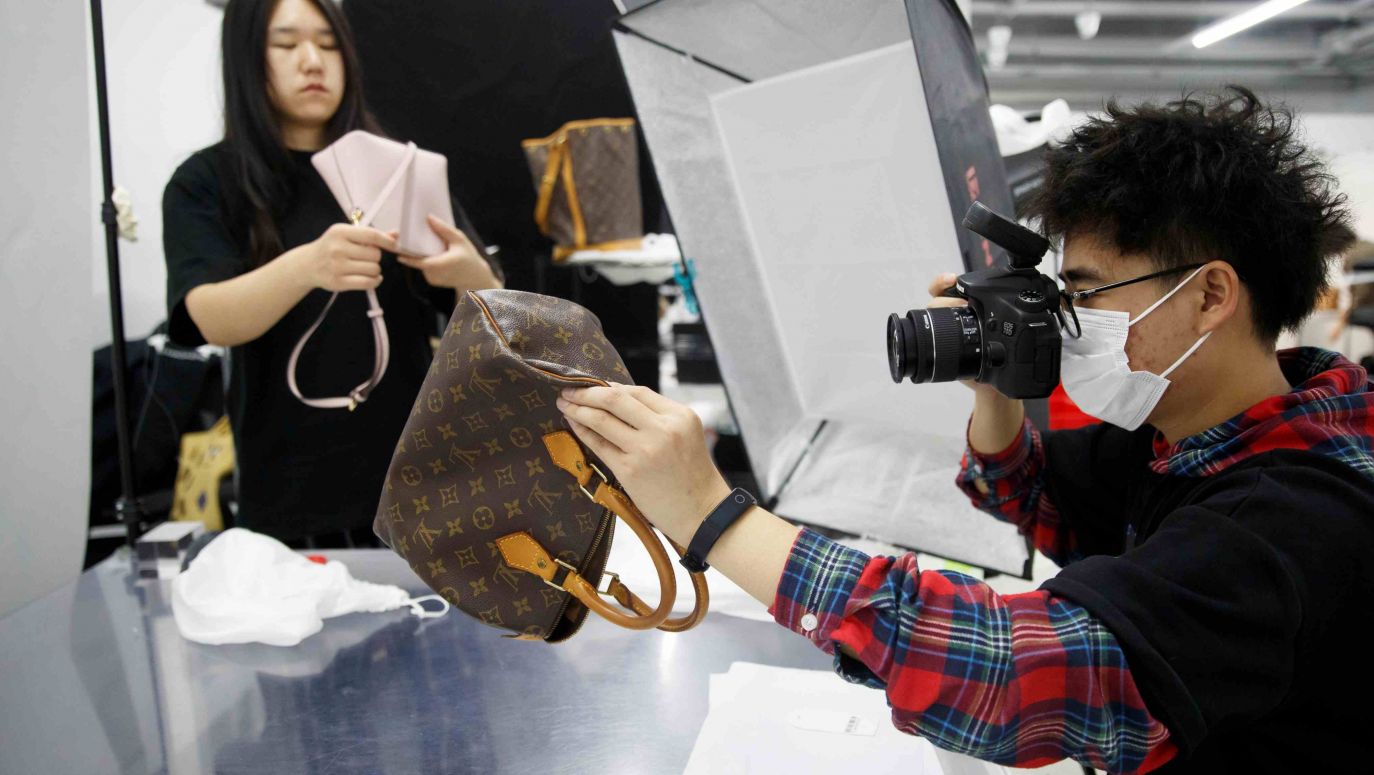Clothes treasure hunters. Second-hand shops back in fashion
07.06.2023
According to the survey “Fashion for second-hand shops”, conducted in 2022 by LESS GROUP as many as 69% of Poles shop in thrift stores. It turns out that such places are mostly visited by youngsters – the survey has revealed that 83% of people under 25 buy second-hand clothes.

Every industrial revolution has its economic drug.
see more
It must be admitted that a series of articles on clothing waste and the non-existent recycling of textiles, especially synthetic ones, has done its job in raising consumer awareness. For the casual bread eater, the information that 92 million tonnes of NEW clothes sewn in the previous season by the clothing industry and unsold end up in landfills every year is electrifying. As is the fact that only 15% of these clothing are recycled.
More expensive tastes better
The deep emotional aspect – although not necessarily in the “let’s save the planet” type – is indicated by research conducted last year for ThredUp. It turns out that as many as 82% of respondents who buy second-hand products “feel a surge of positive emotions”. 8%% fewer believe that the acceptance of second-hand clothing has increased dramatically over the past five years. 72% wear thrift store clothes with pride, “taking pride in where they came from”. And only 63 per cent chose second-hand shopping out of savings or a desire to purchase branded items at lower prices.
When consumer behaviour is related to emotions, scientists enter the fray, whose role is to describe how our feelings and the brain’s reward system work, and – let’s be honest – to offer marketers from large and smaller corporations good advice on how to sell NOW to earn the most. Marketing is not only a sales technology, it is also a branch of serious sociological and neurobiological and even evolutionary research.
Man is also a consumer, some more willingly than others, some more consciously than others.
And such research was published in “Nature” in 2017 (5 years ago, before the boom started). It has quite a long history: already in 2008, Hilke Plassmann from the largest and best school of management and business in the world (INSEAD – Institut Européen d'Administration des Affaires) in Fontainebleau, France, showed that “marketing campaigns and a higher product price can modulate the brain’s expectations of product quality”. The publication in 2017 resulted from the fact that prof. Bernd Weber from the Center for Economics and Neuroscience of the University of Bonn and his team also studied this phenomenon and together with Prof. Plassmann asked another important question: How is it that price deceives the brain’s sense of taste?
As the price increases, our expectations increase. We are motivated to buy because we believe so much that a more expensive product (wine and chocolate were tested) really tastes better.
Our brain hates the state of dissatisfaction in the reward centre, so it mysteriously tells us (or, more precisely our own taste centres) that the chocolate on the top shelf is significantly tastier than those on the slightly lower shelf. Therefore, this is why in large-area stores marketers order to place (which is inconvenient for both the staff and the buyer) the cheapest products on low shelves. Where it sells, there is no place for random actions.
Conducive mess
And although our expectations as to its quality still increase with the increase in the price of the product, the reward does not have to consist only in a pleasant tickling of the palate. We all have a hidden hunter-gatherer in us, because we have lived in this way of managing resources the longest in the history of our species, whereas agriculture and industry have only been around for 12,000 years at most. The prize can be a treasure. Doesn’t the Gospel in the parable of the pearl and numerous other, often much older, human stories, fairy tales or legends teach us about this? Searching for and finding treasures invisible to other pearls, Aladdin’s lamps or holy grails is a source of many deep positive emotions in us.
Therefore, these emotions also need to be thoroughly examined (why not in a thrift store?), although they are as old as the hills. Especially that in the aforementioned research commissioned by LESS, every fourth consumer appreciated the variety of second-hand shops and treated shopping there as a form of spending free time, without any additional premises. So it bears the hallmarks of treasure hunting.
This matter has recently interested sociologists and marketing specialists: Gretchen R. Ross, Lisa E. Bolton and Margaret G. Meloy, representing the state universities of Texas and Pennsylvania. So the ladies went to scientifically explore how thrift stores function in terms of marketing. Why do people buy there and how to make a business out of it? The results were published in the industry scientific journal “Journal of Retailing”, focused, as the name suggests, on retail trade.
Since, due to the pandemic, they could not go to the surrounding second-hand shops to survey customers there, they conducted an online survey. They asked the participants, who had experience of shopping in such places (according to their own statements), to look at pictures of organised or disorganised second-hand shop windows. On this basis, they were to assess in advance whether they would enter the store (preliminary assessment of available products) and whether they thought they would shop there. Scenarios offered to study participants included randomly entering a thrift store to browse through, going to a second-hand store with the intention of buying a specific product, shopping at a store that offered a clear return policy, and shopping at a store where the salesperson showed little or a lot of knowledge about the available offer.
For researchers and shop owners, what may be most surprising is that it is the disorganized displays that attract customers to second hand shops the most. “They signal the treasure hidden in this mess”. The problem, however, is that even in chaos, the seller must know very precisely, what he is trading and know their goods.
Because when we see a mess in a thrift store, we are tormented by conflicting feelings. On the one hand, we are concerned about the low quality of the goods, so the time and effort put into digging through piles of things is wasted, and this reduces the likelihood of purchase. On the other hand, this, as the French would call it “bazaar” (not to use a different, less descent word), we can all trust our brain that something valuable is hidden here. This increases the likelihood of a purchase.
Therefore, the more thrift stores will resemble Schulz’s cinnamon shops, but also the more the person sitting inside will be involved in discreet but competent help in our search (i.e. they will not give the impression that they are guarding a pile of garbage here, but rather a treasure hidden in this mountain, sharing stories about the items they sell, etc.), the better. Buyers then perceive the products as carefully selected by the seller, which reduces their sense of risk and increases the likelihood of purchase. After all, a treasure can look completely different for everyone and something else is priceless at a given moment.
Interestingly, when a clear return policy was introduced in this thrift store experiment, the sense of risk diminished among customers, but at the same time the same happened to the feeling that the store had hidden treasures. Who in their right mind would give away a treasure? The offered items, as if by a magic wand, lost their unique character. The excitement of snooping around the store declined, and so did the likelihood of buying
Other than the rest

 SIGN UP TO OUR PAGE
SIGN UP TO OUR PAGE
 Research carried out in Poland over the last two years shows that people shop in thrift stores for economic reasons (70-88% of consumers), as well as out of regard for the opportunity to get a good deal on branded or rare garments (75%), and high-quality products (63%). Concern for the environment is also growing in importance (54%).
Research carried out in Poland over the last two years shows that people shop in thrift stores for economic reasons (70-88% of consumers), as well as out of regard for the opportunity to get a good deal on branded or rare garments (75%), and high-quality products (63%). Concern for the environment is also growing in importance (54%).





